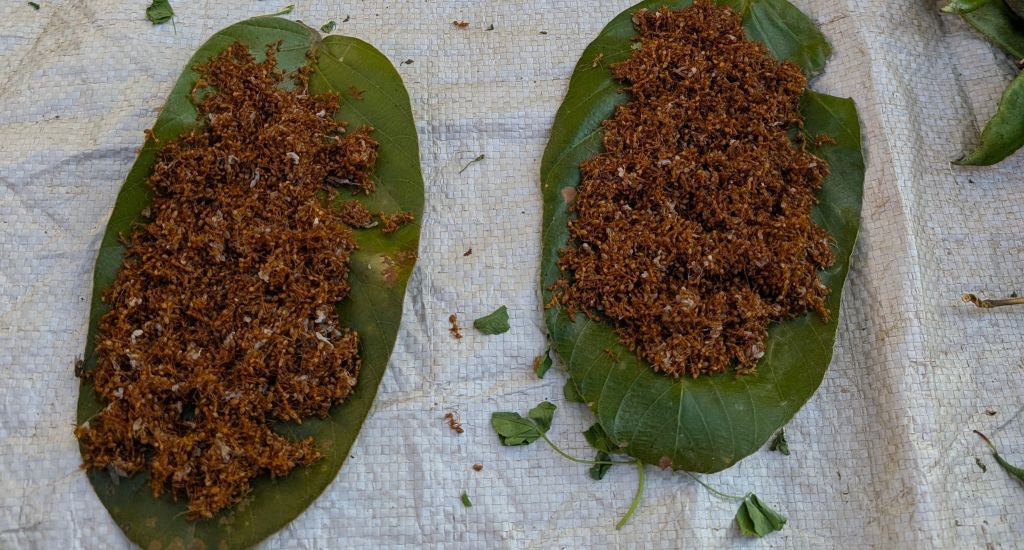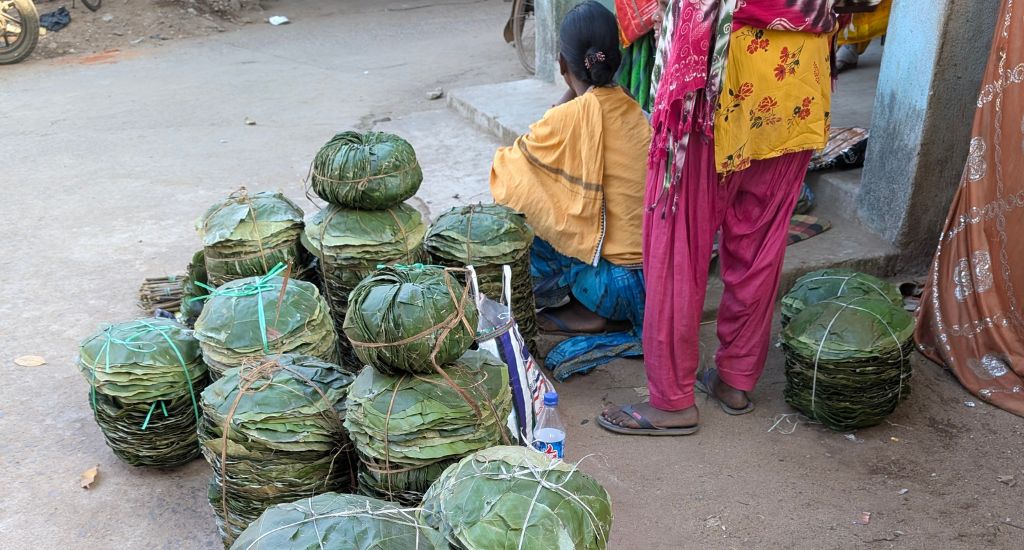Rourkela has been known as the industrial capital of Odisha since the 1950s when the steel plant was set up here in collaboration with the Germans. Reportedly, around 15,000 people from the Munda, Kharia, Lohra, and Oraon tribes, spread over 33 villages, were displaced to build what India’s then Prime Minister, Jawaharlal Nehru, termed as one of the “temples of modern India”.
After ages I must have bought something that had no carbon footprint.

A fair number of them were relocated to Jhirpani, a village on the outskirts of Rourkela. While some of these tribals took employment at the steel plant, most tried to find new roots to anchor themselves. A glimpse of their long journey is visible on a casual stroll of the weekly haat (market) in Jhirpani, where these tribals bring with them gems from their forests.
Also read: How many of these lesser-known local greens have you tried?
Nature’s bounty on display
They neatly line up small heaps of vegetables, greens, and herbs on the ground and squat next to them patiently. Some wade their way through the forests, carrying barely a kilo of wild tomatoes to sell at the haat.
Their meagre stocks are in stark variance from the bursting aisles of city hyper marts which I personally find overtly overwhelming, akin to sinking in a black hole. That is precisely what makes these small heaps precious. Their value lies in the fact that they are scarce.

Most of these tribals come across as foragers and not cultivators. They grow vegetables and greens on small patches of land for sustenance and to barter. Usually, it is the surplus that finds its way to the haat.
The haat is a trove of things, scarce as well as rare. Like the red ant eggs that are laboriously and skilfully sourced from tall trees of the nearby forests. It is a feat usually achieved by young boys who are adept at the task of climbing the trees and dodging the ants while retrieving their eggs. Though, I was told, it is nearly impossible for anyone to escape the painful bites.
I also found some uncommon leafy greens here. Like the sunsuniya saag which I mistook for clover at first glance. My furrowed forehead must have made me look ignorant because just when I was examining it closely, a series of instructions landed on me. “It is very healthy… it is medicinal… cook it like spinach,” said the old woman pointing at the bunch of sunsuniya in my hand, in a lyrical tone.

My attention shifted to her but all I could manage was a blank stare. A fellow shopper came to my rescue by translating it from native Sadri to Hindi.
Point taken. Saag taken. Four bundles, which looked like they had been plucked right then. After ages I must have bought something that had no carbon footprint.
Also read: Here’s why you should add Kashmiri nadru to your menu
No pushy salespeople
Interestingly, most sellers at rural haats do not use any weighing scales. The produce is just kept roughly in separate piles or bundles. Each of these is then priced, I must admit, very modestly. Very. There’s no semblance of greed or push sales. At times they are just content to take what the customers have to offer.
Moringa flowers, puffed unpolished rice, neem tree datuns (teeth cleaning twigs), several varieties of dried fish, powders of neem, moringa, and other greens, indigenous rice varieties, medicinal herbs sourced from the forest interiors, wild berries, mahua flower that is used to make country liquor, brooms and baskets crafted out of dried grass, clay pots…there is plenty at the haat to sample. What city folks label as superfoods are staples for the tribals.

I walked out of the haat with a bagful of the best nature had to offer. I had missed seeing the giveaway alert when I walked in though – a few lessons in conscious living that will last me a lifetime.
Also read: Surprising findings on India’s food habits
The lead image on top shows a view of the weekly rural haat at Jhirpani in Rourkela, Odisha. (Photo courtesy Kiran Yadav)
Kiran Yadav is a Delhi-based freelance journalist.








